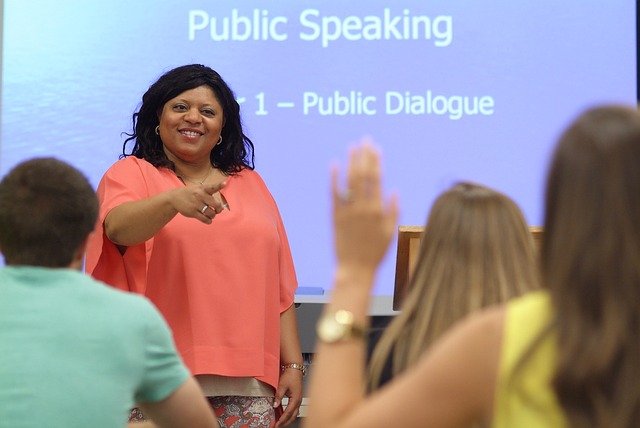Education in Ontario falls under provincial jurisdiction. Publicly funded elementary and secondary schools are administered by the Ontario Ministry of Education, while colleges and universities are administered by the Ontario Ministry of Training, Colleges and Universities. The current Minister of Education is Laurel Broten, and the current minister of Training, Colleges and Universities is Glen Murray.
Ontario operates four publicly funded school systems:
- an English-language public school system
- a French-language public school system
- an English language separate school system
- a French language separate school system
The public school system was originally Protestant but is now secular and non-denominational. The Separate School system is Roman Catholic (open to students of all faiths at secondary level, they have the option of refusing non-Catholics at the elementary level) with the exception of the Penetanguishene Protestant Separate School Board which runs a single Protestant school.
Within the public boards, alternative schools have begun to emerge. In 2009 the Africentric School opened in Toronto and in 2011 the DSBN Academy opened its doors. The Africentric School was established in part to address the 40% dropout rate of black students in the Toronto District School Board. The DSBN Academy is a new school aimed at providing additional supports for students who may lack access or the resources to attend post secondary education. These alternative schools are based on social contexts that the individual school boards deem necessary for their constituents and are funded within the publicly funded school systems.
In addition, alternative schools in Ontario have also come to be for religious contexts as in the case of Eden High School in St. Catharines. Eden is a publicly funded secondary school that operates as an alternative secondary school within the District School Board of Niagara. The school offers the prescribed Ontario Ministry of Education’s Secondary School program delivered in the context of a community where the educational objectives of the Ministry of Education and those of Eden’s own Spiritual Life Department are respected and regarded as complementary in the training of students.
Finally, Ontario allows private schools that meet provincial standards to offer the Ontario Secondary School Diploma. “According to the Education Act of Ontario, a private school is deemed as any educational institution that is partially or entirely funded by sources other than the government, and that students of appropriate age attend for instruction between 9:00 to 16:00 on a typical school day. Ontario private schools are regulated by the province’s Ministry of Education, and must meet, but often exceed, their standards. As a result, it is necessary for each to notify the ministry of their operation annually before or on September 1.
Officers can inspect the records and premises of Ontario private schools to ensure they meet provincial standards. Inspection is also carried out if a private secondary school would like to include subjects in their curriculum that can be counted as credits for the Ontario Secondary School Diploma.
There are approximately 700 private schools in Ontario, most represented by associations uniting schools of a common goal, view, or philosophy. Instructors are not required to be members of the Ontario College of Teachers, though many often are. More importantly, instructors are commissioned if their credentials satisfy the requirements outlined by their respective private school. As there are several types of private schools from elementary to the secondary school level, experience and training will differ for each.”
Ontario School Boards
There are 72 school boards in Ontario, including 31 English public boards, 29 English Catholic boards, 4 French public boards, and 8 French Catholic boards. There are also several ‘school authorities’ that oversee schools in hospitals, treatment centres, and in remote regions of the province.
The UN has cited Ontario for discrimination against non-Catholics because Ontario publicly funds the Catholic School Board but not schools professing any other faith. A CBC poll suggested that 58.2% of Ontarians want a single publicly funded school system with no discrimination.
The Independent Learning Centre was founded in 1926 to provide distance education services to elementary and secondary school students. Since 2002, the ILC has been operated by the Ontario Educational Communications Authority (TVOntario).
Protecting a Strong Education System
- Committing over $64 million in 2011–12, growing to $309 million in 2013–14, in additional operating grants to colleges and universities, supporting more than 60,000 additional spaces by 2015–16.
- Approximately 200 more schools will be offering full-day kindergarten in September 2011 and 900 more in September 2012, bringing the total number of schools offering the program to close to 1,700 and benefiting approximately 120,000 children in 2012.
- Full-day kindergarten will be available in all elementary schools in September 2014.
Building Knowledge and Skills
Ontario has long recognized the importance of a well-educated workforce that can compete in the global economy and attract international investment. Ontarians with higher levels of knowledge and skills have better employment prospects, earn higher wages, are engaged citizens, contribute more in taxes and are less dependent on government supports during their working lives. That is why education, ranging from full-day kindergarten to postsecondary, remains a top priority for the Ontario government.
Postsecondary Education and Training
Ontario has made significant investments in postsecondary education and skills training to develop a well-trained and highly skilled workforce. These investments ensure that Ontario’s workforce is among the most skilled in the world and better positioned to compete globally.
Key Achievements
- In 2010–11, about 355,500 full-time students were enrolled in the 20 publicly funded universities, about 107,500 more than in 2002–03; and about 178,600 full-time students were enrolled in the 24 publicly funded colleges, about 32,500 more than in 2002–03.
- The number of graduate students at universities has increased by 57 per cent since 2002–03.
- More than 300,000 students are eligible to receive the 30% Off Ontario Tuition grant.
- Employment Ontario serves more than one million people each year, including over 100,000 employers.
- Nearly 55,000 people have enrolled in Second Career training since June 2008.
- Over 100,000 students accessed jobs and services in the summer of 2011.
- Annual apprenticeship enrolment is up from 17,000 in 2002–03 to nearly 30,000 in 2010–11.
- Total number of active apprentices is up from 60,000 in 2002–03 to 120,000 in 2010–11.
Building on Postsecondary Education Achievements
Ontario is committed to maintaining and enhancing the quality of education while maximizing the value from each taxpayer dollar.
Progress includes reversing the decline in operating grants to colleges and universities experienced in the 1990s; continuing to build a high-quality postsecondary sector; and establishing an integrated employment and training program to provide Ontarians with the knowledge and skills they need for the 21st century. The government will continue to work with the postsecondary sector to enhance innovation and productivity to support efficiency targets while supporting quality education for students.
Supporting Students and Their Families
In January 2012, the government announced the new 30% Off Ontario Tuition grant. The 2012 Budget affirms the government’s commitment to continue the 30% Off Ontario Tuition grant, providing the Budget is approved by the legislature this year.
The grant provides up to $800 per term for a maximum of two terms per year for full-time undergraduate university or college degree students and up to $365 per term for a maximum of two terms for students enrolled in college diploma or certificate programs at publicly funded Ontario institutions. Moving forward, the grant is indexed to the annual increase in college and university tuition, beginning in the 2012–13 year.
A Smarter Ontario: Excellence in Education
Ontario’s economic success depends on a strong, publicly funded education system. That means investing in skills and education and helping students reach their full potential, starting as early as kindergarten.
Since 2003, the government has made record investments in education. In 2011–12, Grants for Student Needs funding to school boards will be $21billion – per-pupil funding will be $11,207, a 4.6 per cent increase from 2010–11.
Investments in education since 2003 have yielded measurable results in terms of improved literacy and numeracy test scores, lower primary class sizes and higher graduation rates. Beyond the numbers, the quality of education is on the rise.
Sources:- http://www.fin.gov.on.ca/en/budget/
- http://en.wikipedia.org/wiki/Education_in_Ontario



















